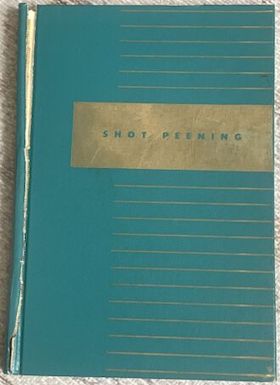
Curated with aloha by
Ted Mooney, P.E. RET

The authoritative public forum
for Metal Finishing 1989-2025

-----
Shot peening titanium; cross contamination of steel
Q. DO WE HAVE TO ETCH TITANIUM TO REMOVE .0002 TO .0004 INCH MATERIAL FROM EACH SURFACE TO REMOVE CONTAMINATION AND EMBEDDED METAL BEFORE SHOT PEENING OR CAN WE SHOT PEEN FINISH MACHINED PART AFTER DEGREASING?
HASHIR A KHANAEROSPACE - SANTA ANA, California
2006
A. It all depends on design/drawing requirements. You would normally remove material prior to flaw detection rather than shot peening as this removes smeared material after machining to ensure any flaws are revealed.
I would suspect that general cleaning (degreasing, aqueous washing or similar) would be sufficient prior to shot peening (but don't quote me on that). If in doubt check with your customer who will willingly tell you what they require.
Aerospace - Yeovil, Somerset, UK
A. You can dip in 50% nitric acid before ,or after if you used steel media for shot peening. Good luck

Khair Shishani
aircraft maintenance - Al Ain, UAE
Q. To all,
we are going to use a shot peening machine to process both titanium and steel parts. The used shots are S230, i.e. steel themselves. For the titanium parts we foresee a chemical decontamination after peening from steel. What about steel parts? Do they need to be decontaminated by the titanium particles inevitably present into the shot flow? If yes How can we decontaminate?
manufacturing engineer - Italy
September 29, 2009
A. There is always the possibility of cross contamination no matter what steps are taken. If you have enough volume, it is highly suggested to get 2 different machines dedicated specifically to each separate process. This is normal in the aircraft industry.

AF Kenton
retired business owner - Hatboro, Pennsylvania
A. From a corrosion standpoint at least, I wouldn't worry too much about titanium particles embedded in steel. However steel particles embedded in titanium is a big problem. Prevention, i.e. using dedicated non-ferrous shot media for anything that isn't carbon steel, tends to be a much better option than decontaminating the parts after you have blasted steel into the surface.

Ray Kremer
Stellar Solutions, Inc.
McHenry, Illinois

Q. The maximum volume rate will be: 24 titanium items and 8 300M items per month. It doesn't seem to be very high.
Nevertheless we are worried only about the contamination of titanium on steel. So there is no way to perform this decontamination? However Is there any possibility to reduce this risk?
manufacturing engineer - Italy
Q, A, or Comment on THIS thread -or- Start a NEW Thread
